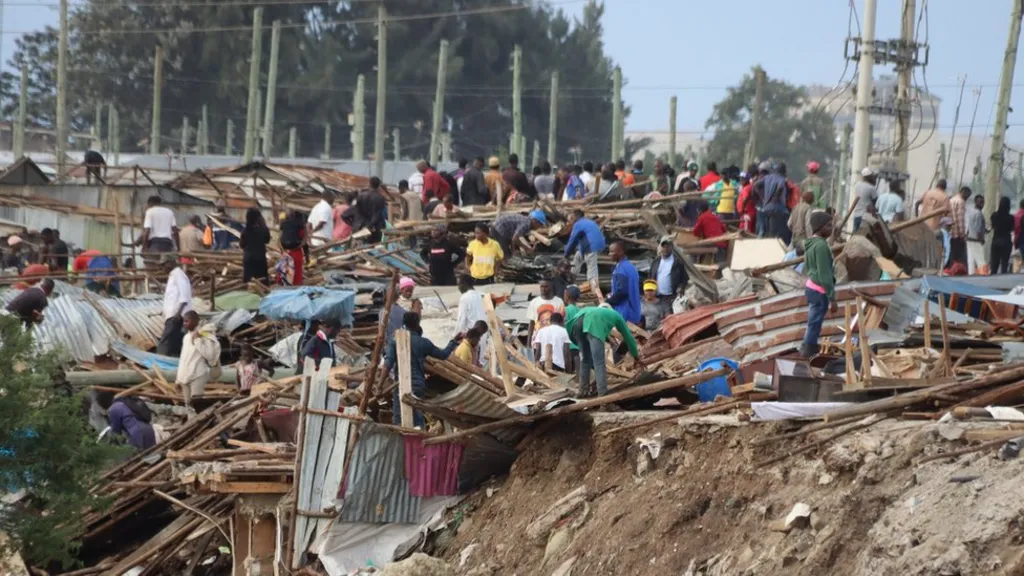World natural disasters lead to more human displacement than conflicts. Most disaster-related displacement is short term, but migration related to slow-onset climate change may be more permanent and possibly large-scale. Sea-level rise, land degradation, coastal erosion, extreme temperature, and other gradual impacts of climate change are making entire areas unlivable. Threatening the viability of rural livelihoods, and fostering serious competition over resources. For every 1C rise in average temperature, the atmosphere can hold about 7% more moisture which can result in more droplets and heavier rainfall, sometimes in a shorter space of time and over a smaller area.

These climate changes can make the repercussions of sudden disasters more severe, especially when they are stacked together, for instance floods and storms layered on top of longer rainy seasons or higher sea levels, the disasters can become more ruinous. In a highly cited prediction, the World Bank’s worst-case estimates that some 216 million people could move internally by 2050, as water becomes scarcer and agricultural livelihoods threatened. However, if governments mitigate the pace of climate change and adapt to its impacts, the World Bank predicts this number could drop by as much as 80 percent, to 44 million.
As a general rule, climate disasters are forcing lots of people to flee, but mostly to nearby neighborhoods from where they quickly return, while slower-onset climate events may over time lead to added migration, including across borders. Yet these adverse climate events are becoming very frequent and their impacts even more severe.
A current example is the torrential rains that have caused devastating floods in Kenya, where more than 200 people have died, thousands have been displaced and nearly 2,000 schools have been destroyed. All remaining schools have been shut down until further notice. These disruptions in daily life activities due to the climate crisis is not a new occurrence in Africa. The rains have been ravaging Kenya since March marking this as one most catastrophic weather events in the country in years. Now, Cyclone Hidaya is expected to hit Kenya and neighboring Tanzania late on Friday, which could further worsen the flooding, and it comes amidst recent heavy rainfall across East Africa.
In anticipation of Cyclone Hidaya, President William Ruto’s government has ordered mandatory evacuations for residents living close to 178 dams and water reservoirs in 33 counties.During his national address to the nation on 3rd May 2024, Ruto said he had directed the Ministry of Education to postpone the reopening of schools for their second term until further notice. Besides the schools destroyed since March, many other schools are being used to shelter those who have been displaced by the floods.
These Sudden disruptions in people’s daily lives and livelihoods due to the climate crisis must never become a norm. It is imperative that World leaders work toward building adaptation mechanisms and resilience in high risk communities. Losing thousands of lives and hard earned gains with no alternative to rebuild can be very shattering. Waking up in the face of death and destruction from dire climate events will certainly not only cause physical damage to our people but also increase the burden of emotional and mental health issues among vulnerable communities.
On 2nd May 2024, Human Rights Watch published findings that low-income neighborhoods, such as Mathare, had been severely impacted by the floods due to “less solid structures, congestion and poor sanitation infrastructure”. This is a stark reminder of the human cost in the climate crisis. Its also a vivid call for governments to come up with strategies and structures to empower communities in such circumstances. Ministries in charge of infrastructure development should equally come up with policies and mechanisms that promote climate proof construction works to reduce the cost of damage from disasters.
Another recent example of severe flooding due to climate change was the 2022 floods in Pakistan, which displaced an estimated 8 million people and caused approximately U.S. $30 billion in damages. Movement was at first internal, primarily of people evacuating to higher ground. But the floods hit a country already grappling with economic collapse and rampant inflation; just months later, thousands of Pakistanis migrated irregularly to Europe, a movement that captured headlines when a boat carrying approximately 350 Pakistanis and hundreds of other migrants capsized off the coast of Greece. Pakistanis were not among the top ten nationalities arriving irregularly in Europe in 2022, but jumped to fifth in the first half of 2023. Many of these migrants moved primarily because of economic reasons, but these factors were surely amplified by the floods.
The impacts of climate change are being felt all over the world, and thus climate-related migration occurs globally. But the impacts are unequal, and the most severe migration and displacement is often occurring in low- and middle-income countries that have made little historical contribution to warming the planet. This is why displacement is often described as the “human face” of the losses and damages caused by climate change. If the world continues to draw back in prioritizing finances for adaptation, resilience building, mitigation, loss and damage,hundreds of thousands will continually grapple with floods and other climate disasters. There is no way we can talk about justice for the people without tackling such issues.
